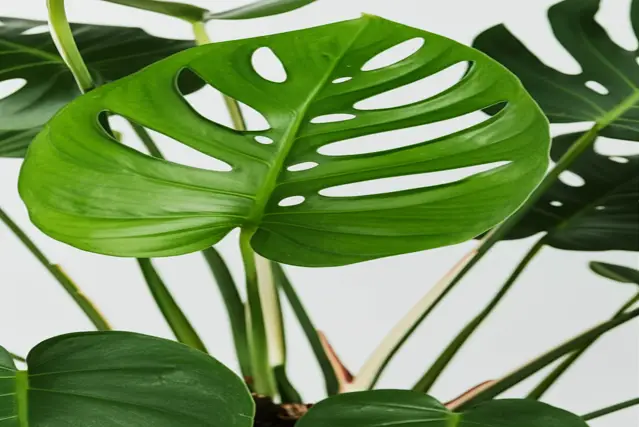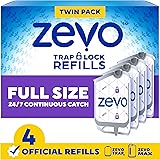The Monstera, with its iconic fenestrations (holes), has become a staple in homes around the world. More than just a pretty face, these plants are relatively easy to care for, making them a favorite among both beginner and experienced plant enthusiasts. But did you know that “Monstera” isn’t just one plant? It’s a whole genus with a variety of fascinating species.
In this comprehensive guide, we’ll dive deep into the captivating world of Monsteras, exploring their diverse forms, care requirements, and propagation techniques. Get ready to become a Monstera expert!
Introduction to the Monstera Genus
The Monstera genus belongs to the Araceae family, a large and diverse group of flowering plants. Native to tropical regions of the Americas, from Mexico to parts of South America, Monsteras are known for their dramatic foliage and aerial roots. The name “Monstera” is derived from the Latin word “monstrum,” which translates to “monster” or “abnormal,” likely referring to the unusually large leaves and their characteristic holes.
Why are Monsteras so popular? Their popularity has surged in recent years, fueled by social media trends and a growing appreciation for biophilic design (incorporating natural elements into indoor spaces). According to recent statistics, Monstera sales have consistently increased year over year, with 2023 seeing a record high in online plant purchases, particularly for rare and variegated Monstera varieties. This trend is expected to continue into 2025 as people seek to bring a touch of the tropics into their homes.
A Word About Terminology: Fenestrations and More
Before we delve into specific species, let’s clarify some key terms:
- Fenestrations: These are the characteristic holes or splits that develop in the leaves of many Monstera species as they mature. They are thought to help the plant withstand strong winds in their natural habitat and allow sunlight to penetrate to lower leaves.
- Aerial Roots: Monsteras produce aerial roots that grow from the stems. These roots help the plant climb and absorb moisture and nutrients from the air.
- Genus: A taxonomic rank used in the biological classification of living and fossil organisms. Monstera is a genus within the Araceae family.
- Species: A group of living organisms consisting of similar individuals capable of exchanging genes or interbreeding. Monstera deliciosa is a specific species within the Monstera genus.
Popular Monstera Species
Let’s explore some of the most commonly found and sought-after Monstera species:

rare monstera varieties
Monstera deliciosa: The King of Monsteras
This is the iconic Monstera everyone thinks of when they hear the name. Monstera deliciosa is known for its large, deeply fenestrated leaves that can grow to impressive sizes (up to 3 feet wide!). In their natural habitat, they can climb to heights of 70 feet, but indoors, they usually stay more manageable. The “deliciosa” part of the name refers to the edible fruit it can produce under the right conditions, which tastes like a combination of banana, pineapple, and mango (though it must be fully ripe to be safe to eat, as unripe fruit contains calcium oxalate crystals that can irritate the mouth and throat).
Care Tips for Monstera deliciosa:
- Light: Bright, indirect light is ideal. Avoid direct sunlight, which can scorch the leaves. An east-facing window is often a good choice.
- Water: Allow the top inch or two of soil to dry out between waterings. Overwatering can lead to root rot. In winter, reduce watering frequency.
- Soil: Well-draining potting mix is essential. A mix of potting soil, perlite, and orchid bark works well.
- Humidity: Monsteras prefer humidity levels of 60-80%. Increase humidity by misting the leaves regularly, using a humidifier, or placing the plant on a pebble tray filled with water.
- Temperature: Ideal temperatures are between 65-80°F (18-27°C).
- Support: Provide a moss pole or other support for the plant to climb. This encourages larger leaf growth and more fenestrations.
- Fertilizing: Feed with a balanced liquid fertilizer every 2-4 weeks during the growing season (spring and summer). Reduce or stop fertilizing in the fall and winter.
Variegated Monstera deliciosa: A Collector’s Dream
The variegated Monstera deliciosa is a highly sought-after variant characterized by its striking white or cream-colored patterns on the leaves. There are several types of variegation, including:
- Albo Variegata: Features large, irregular white patches on the leaves. This is one of the most popular and valuable variegated Monsteras.
- Thai Constellation: Has speckled, creamy-yellow variegation that resembles stars in the night sky. It’s generally more stable than Albo variegation, meaning it’s less likely to revert to all-green leaves.
- Aurea Variegata: Features a yellow-ish, golden type of variegation.
Variegated Monsteras require similar care to their non-variegated counterparts, but they generally need brighter indirect light to maintain their variegation. Lower light levels can cause the white or cream areas to turn brown.
Market Trends: The market for variegated Monsteras is booming, with prices ranging from hundreds to thousands of dollars for mature plants or well-rooted cuttings, especially for Albo variegata. Thai Constellation is generally more accessible due to its more stable variegation and ease of propagation. Be cautious of scams when buying variegated Monsteras online. Always purchase from reputable sellers and ask for clear photos of the plant’s variegation and root system.
| Variety | Description | Rarity | Price Range (Cutting) |
|---|---|---|---|
| Monstera deliciosa | Classic green leaves with fenestrations. | Common | $10 – $30 |
| Monstera deliciosa Albo Variegata | White, irregular variegation. | Rare | $100 – $1000+ |
| Monstera deliciosa Thai Constellation | Creamy-yellow, speckled variegation. | Uncommon | $50 – $300+ |
Monstera adansonii: The Swiss Cheese Vine
Monstera adansonii, often called the Swiss Cheese Vine or Five Holes Plant, is known for its smaller, more delicate leaves with abundant holes. Unlike Monstera deliciosa, the leaves of Monstera adansonii typically do not split all the way to the edge. It’s a vining plant that looks beautiful trailing from a hanging basket or climbing a support structure.
Care Tips for Monstera adansonii:
- Light: Bright, indirect light is best, but Monstera adansonii can tolerate slightly lower light conditions than Monstera deliciosa.
- Water: Allow the top inch of soil to dry out between waterings. It’s more susceptible to root rot than Monstera deliciosa, so avoid overwatering.
- Soil: Well-draining potting mix is crucial.
- Humidity: Prefers high humidity, but can adapt to average household humidity.
- Temperature: Ideal temperatures are between 65-80°F (18-27°C).
- Support: Provide a trellis, moss pole, or allow it to trail from a hanging basket.
- Fertilizing: Feed with a balanced liquid fertilizer every 2-4 weeks during the growing season.
Monstera adansonii Varieties:
- Narrow Form (Monstera adansonii ‘Narrow Form’): Has narrower leaves with more elongated holes.
- Wide Form (Monstera adansonii ‘Wide Form’): Has broader leaves with larger holes.
- Variegated Monstera adansonii: A rare variety with white or cream-colored variegation. It’s more challenging to find and care for.
Monstera obliqua: The Holy Grail of Monsteras
Monstera obliqua is arguably the most sought-after and rare Monstera species. It’s characterized by its extremely thin, delicate leaves with very large holes. In fact, the holes often make up more of the leaf surface than the actual leaf tissue. Monstera obliqua is notoriously difficult to grow and requires very specific conditions to thrive. It is NOT a beginner-friendly plant!
Care Tips for Monstera obliqua:
- Light: Very bright, indirect light is essential. Avoid direct sunlight.
- Water: Keep the soil consistently moist but not soggy. Use distilled water or rainwater to avoid mineral buildup.
- Soil: A very airy and well-draining mix is crucial. A mix of sphagnum moss, perlite, and orchid bark is often recommended.
- Humidity: Extremely high humidity (80-90%) is essential. A greenhouse cabinet or enclosed terrarium is often necessary.
- Temperature: Warm temperatures are preferred (70-85°F / 21-29°C).
- Support: Provide a moss pole or other support for climbing.
- Fertilizing: Feed very sparingly with a diluted liquid fertilizer every 4-6 weeks during the growing season.
Important Note: Many plants are mislabeled as Monstera obliqua. Monstera adansonii with very large holes is often sold as Monstera obliqua. True Monstera obliqua is extremely rare and expensive, so be wary of deals that seem too good to be true.
Monstera dubia: The Shingle Plant
Monstera dubia is a unique species that exhibits different growth patterns at different stages of its life. As a juvenile, it has small, heart-shaped leaves that lie flat against a surface, a phenomenon known as “shingling.” The leaves are a beautiful silvery-green color with darker green veins. As the plant matures, it will begin to produce larger, more typical Monstera-like leaves with fenestrations. However, mature leaves are only produced when the plant is allowed to climb.
Care Tips for Monstera dubia:
- Light: Bright, indirect light is crucial. Avoid direct sunlight, which can scorch the delicate leaves.
- Water: Keep the soil consistently moist but not soggy. Allow the top layer of soil to slightly dry out between waterings.
- Soil: Well-draining potting mix is essential. A mix of potting soil, perlite, and orchid bark works well.
- Humidity: Monstera dubia thrives in high humidity. Aim for 60-80% humidity.
- Temperature: Ideal temperatures are between 65-80°F (18-27°C).
- Support: Provide a plank of wood, moss pole, or other flat surface for the plant to shingle on. This is crucial for its juvenile growth habit.
- Fertilizing: Feed with a balanced liquid fertilizer every 2-4 weeks during the growing season. Reduce or stop fertilizing in the fall and winter.
Monstera borsigiana: The Smaller Cousin of deliciosa
Monstera borsigiana is often confused with Monstera deliciosa, and for good reason. They are very similar in appearance, and some botanists even consider borsigiana to be a variety of deliciosa rather than a distinct species. However, there are a few key differences:
- Size: Monstera borsigiana is generally smaller than Monstera deliciosa, with leaves that typically don’t grow as large.
- Stem: Monstera borsigiana has a smoother, less ruffled stem than Monstera deliciosa.
- Leaf Production: Monstera borsigiana tends to produce more leaves per stem node than Monstera deliciosa.
Read More: About Best Gifts for Plant Lovers: Unique & Green Ideas 2025
Care for Monstera borsigiana is essentially the same as for Monstera deliciosa. It’s a relatively easy-to-care-for plant that can bring a touch of the tropics to your home.
Monstera siltepecana: The Silver Monstera
Monstera siltepecana is a less common but increasingly popular Monstera species known for its unique foliage. Juvenile plants have oval-shaped, silvery-green leaves with dark green veins. As the plant matures, it will develop fenestrations, though not as dramatically as Monstera deliciosa or adansonii. This plant is typically grown as a trailing or climbing vine.
Care Tips for Monstera siltepecana:
- Light: Bright, indirect light is ideal. Too much direct sun can scorch the leaves, while too little light can cause the silver coloration to fade.
- Water: Allow the top inch of soil to dry out between waterings. Overwatering can lead to root rot.
- Soil: Well-draining potting mix is essential. A mix of potting soil, perlite, and orchid bark works well.
- Humidity: Prefers high humidity, but can tolerate average household humidity.
- Temperature: Ideal temperatures are between 65-80°F (18-27°C).
- Support: Provide a trellis, moss pole, or allow it to trail from a hanging basket.
- Fertilizing: Feed with a balanced liquid fertilizer every 2-4 weeks during the growing season.
Other Notable Monstera Species
While the species listed above are the most common in cultivation, there are many other fascinating Monstera species to explore. Here are a few more to pique your interest:
- Monstera standleyana (formerly Philodendron Cobra): This plant used to be under the genus of Philodendron, but has since been reclassified as a monstera. Its glossy, dark green leaves with creamy-white variegation make it a unique addition to any collection. Care is similar to other Monsteras, requiring bright, indirect light and well-draining soil.
- Monstera pinnatipartita: This species has deeply lobed leaves that resemble fingers. It’s a striking plant that requires similar care to Monstera deliciosa.
- Monstera tenuis: A less common species with smaller leaves and more delicate fenestrations. It requires high humidity and bright, indirect light.
Propagation Techniques for Monsteras
Propagating Monsteras is a rewarding way to expand your plant collection and share your love of these plants with others. The most common methods of propagation are:
Stem Cuttings
This is the most common and reliable method for propagating Monsteras. Here’s how to do it:
- Choose a healthy stem: Select a stem with at least one node (the point where a leaf emerges). Ideally, the stem should also have an aerial root.
- Make the cut: Use a clean, sharp knife or pruning shears to cut the stem just below the node.
- Rooting in water: Place the cutting in a jar or glass of water, ensuring that the node is submerged but the leaf is above the water line.
- Rooting medium: Alternatively, plant the cutting directly into a well-draining rooting medium, such as perlite, sphagnum moss, or a mix of both.
- Provide warmth and humidity: Place the cutting in a warm, humid environment. A propagation box or humidity dome can be helpful.
- Wait for roots to develop: Roots should begin to develop within a few weeks.
- Pot up: Once the roots are a few inches long, pot the cutting into a well-draining potting mix.
Air Layering
Air layering is a technique that allows you to root a stem while it’s still attached to the parent plant. This method is particularly useful for larger Monsteras or for propagating rare varieties.
- Choose a stem: Select a stem with at least one node and an aerial root.
- Make a cut: Make a small, shallow cut on the stem just below the node.
- Apply rooting hormone: Apply rooting hormone to the cut area.
- Wrap with sphagnum moss: Wrap the cut area with moist sphagnum moss.
- Secure the moss: Secure the moss with plastic wrap or grafting tape.
- Wait for roots to develop: Roots should begin to develop within a few weeks. You can check for roots by carefully unwrapping the moss.
- Cut and pot up: Once the roots are well-developed, cut the stem below the rooted area and pot it into a well-draining potting mix.
Seed Propagation
While possible, propagating Monsteras from seed is a much slower and less common method. It also requires fresh seeds, which can be difficult to obtain. If you do have access to seeds, sow them in a well-draining seed-starting mix and keep them warm and moist. Germination can take several weeks or even months.
Common Problems and Solutions
Even with the best care, Monsteras can sometimes encounter problems. Here are some common issues and how to address them:
- Yellowing leaves: Can be caused by overwatering, underwatering, nutrient deficiency, or pests. Adjust your watering schedule, fertilize appropriately, and check for pests.
- Brown spots: Can be caused by sunburn, low humidity, or fungal infections. Move the plant to a location with less direct sunlight, increase humidity, and treat with a fungicide if necessary.
- Root rot: Caused by overwatering. Repot the plant in fresh, well-draining potting mix and remove any rotted roots.
- Pests: Common pests include spider mites, mealybugs, and thrips. Treat with insecticidal soap or neem oil.
- Lack of fenestrations: Can be caused by insufficient light or a young plant. Provide brighter light and be patient as the plant matures.
Current Trends and Regulations in the Monstera World
The Monstera world is constantly evolving, with new varieties and trends emerging all the time. Here are some of the current trends and regulations to be aware of:
- Rare and Variegated Monsteras: The demand for rare and variegated Monsteras continues to drive prices up. Collectors are always on the lookout for new and unique varieties.
- Sustainability: There’s a growing emphasis on sustainable plant practices, including using eco-friendly potting mixes, reducing plastic waste, and sourcing plants from ethical nurseries.
- Plant Patents: Some Monstera varieties are patented, meaning that it’s illegal to propagate and sell them without permission from the patent holder. Be sure to check the patent status of any Monstera you plan to propagate for commercial purposes.
- Phytosanitary Certificates: When importing Monsteras from other countries, you may need a phytosanitary certificate to ensure that the plants are free from pests and diseases. Check the regulations of your local authorities before importing any plants.
- Online Marketplaces and Social Media: Platforms like Etsy, eBay, and Instagram have become major marketplaces for buying and selling Monsteras. However, be cautious of scams and always purchase from reputable sellers.
Ethical Considerations
The rising popularity of Monsteras, especially rare varieties, raises ethical considerations:
- Sustainability of Wild Collection: The demand for rare plants can lead to unsustainable harvesting practices in their natural habitats, threatening wild populations. Support nurseries that propagate their plants responsibly.
- Fair Pricing: While rare plants command high prices, ensure that the prices are fair and reflect the effort and resources required to propagate them, not just artificial scarcity.
- Mislabeling: Be wary of plants being mislabeled or misrepresented, particularly online. Do your research and buy from trusted sources.
The Future of Monsteras: Predictions for 2025 and Beyond
The love for Monsteras is showing no signs of slowing down. Here are some predictions for the future of these fantastic plants:
- More Variegated Varieties: Expect to see more new and exciting variegated Monsteras being introduced to the market, driven by tissue culture and selective breeding techniques.
- Increased Focus on Disease Resistance: Breeders will likely focus on developing Monstera varieties that are more resistant to common diseases, such as root rot and fungal infections.
- Growing Popularity of Mini Monsteras: Smaller Monstera varieties, such as Monstera minima (actually a Rhaphidophora tetrasperma), will continue to gain popularity as people seek plants that are well-suited for smaller spaces.
- Smart Plant Technology: Expect to see more integration of smart plant technology, such as sensors that monitor soil moisture and light levels, to help people care for their Monsteras more effectively.
- Increased Awareness of Sustainability: Consumers will become more aware of the environmental impact of plant production and will increasingly demand sustainably grown Monsteras.
Resources for Further Learning
Want to dive even deeper into the world of Monsteras? Here are some resources to check out:
- International Aroid Society: A great resource for information on all members of the Araceae family, including Monsteras.
- Botanical Gardens: Visit your local botanical garden to see different Monstera species in person.
- Online Plant Forums: Join online plant forums and communities to connect with other Monstera enthusiasts and share tips and advice.
- Plant Identification Apps: Use plant identification apps like PictureThis or PlantSnap to help identify different Monstera species. (Note: these are not always 100% accurate.)
- Scientific Journals: Search for scientific articles on Monsteras in journals like “Aroideana” or “Brittonia.”
Care Calendar Template
Using a care calendar can help keep you on track for the needs of your monstera.

monstera leaf types
| Month | Watering | Fertilizing | Pruning | Repotting |
|---|---|---|---|---|
| January | Reduce frequency | None | Remove dead leaves | Check root system |
| February | Reduce frequency | None | Remove dead leaves | Check root system |
| March | Resume normal schedule | Start light feeding | Shape as needed | Consider if root-bound |
| April | Normal schedule | Every 2-4 weeks | Shape as needed | Repot if necessary |
| May | Normal schedule | Every 2-4 weeks | Shape as needed | |
| June | Normal schedule | Every 2-4 weeks | Shape as needed | |
| July | Normal schedule | Every 2-4 weeks | Shape as needed | |
| August | Normal schedule | Every 2-4 weeks | Shape as needed | |
| September | Normal schedule | Reduce feeding | Shape as needed | |
| October | Reduce frequency | Stop feeding | Remove dead leaves | |
| November | Reduce frequency | Stop feeding | Remove dead leaves | |
| December | Reduce frequency | Stop feeding | Remove dead leaves |
Monstera Identification Guide: Quick Tips
This section is a quick reference guide for identifying different monstera species.
| Species | Leaf Size | Fenestrations | Leaf Texture | Other Characteristics |
|---|---|---|---|---|
| Monstera deliciosa | Large (up to 3 feet wide) | Deep splits and holes | Thick, leathery | Edible fruit when ripe; robust growth |
| Monstera adansonii | Small to medium (up to 1 foot long) | Many holes, leaves don’t split to the edge | Thin, delicate | Vining habit; rapid growth |
| Monstera obliqua | Small (very thin) | Extremely large holes, minimal leaf tissue | Very thin, delicate | Very rare; requires high humidity |
| Monstera dubia | Small, heart-shaped (juvenile); larger with fenestrations (mature) | None (juvenile); fenestrations develop as it matures | Silvery-green with dark green veins (juvenile) | Shingling growth habit when young; needs support to mature |
| Monstera borsigiana | Medium to large | Splits and holes, less ruffled stem compared to deliciosa | Smooth | Often mistaken for deliciosa, but smaller and grows faster |
| Monstera siltepecana | Small to medium | Small holes may develop with age | Silvery-green with dark green veins | Unique silver coloration on juvenile leaves |
FAQ: Your Monstera Questions Answered
Got questions about Monsteras? We’ve got answers! Here are some frequently asked questions:
Why are my Monstera’s leaves turning yellow?
Yellowing leaves can be caused by a variety of factors, including overwatering, underwatering, nutrient deficiency, pests, or even just old age. Check the soil moisture, look for pests, and consider fertilizing if it’s been a while.

monstera identification
How often should I water my Monstera?
The watering frequency depends on several factors, including the size of the pot, the type of potting mix, and the environmental conditions. As a general rule, allow the top inch or two of soil to dry out between waterings. In the winter, you’ll need to water less frequently.
What kind of light does my Monstera need?
Most Monsteras prefer bright, indirect light. Avoid direct sunlight, which can scorch the leaves. An east-facing window is often a good choice. If you don’t have enough natural light, you can supplement with a grow light.
Why isn’t my Monstera developing fenestrations?
Lack of fenestrations can be caused by insufficient light or a young plant. Provide brighter light and be patient as the plant matures. Sometimes, plants need several years to mature and begin to show fenestrations.
How do I propagate my Monstera?
The most common methods of propagation are stem cuttings and air layering. Refer to the “Propagation Techniques for Monsteras” section above for detailed instructions.
My Monstera has aerial roots. What should I do with them?
Aerial roots help the plant climb and absorb moisture and nutrients from the air. You can leave them as they are, train them to grow into the soil, or attach them to a moss pole. Avoid cutting them off unless they are dead or unsightly.
What kind of soil should I use for my Monstera?
Monsteras need well-draining potting mix. A mix of potting soil, perlite, and orchid bark works well. You can also add some coco coir for extra moisture retention.
How do I get rid of pests on my Monstera?
Common pests include spider mites, mealybugs, and thrips. Treat with insecticidal soap or neem oil. You can also try wiping the leaves with a damp cloth to remove pests manually.
Is Monstera toxic to pets?
Yes, Monsteras are toxic to pets if ingested. They contain calcium oxalate crystals, which can cause irritation and swelling of the mouth and throat. Keep Monsteras out of reach of pets and children.
How do I increase humidity for my Monstera?
Monsteras prefer high humidity. You can increase humidity by misting the leaves regularly, using a humidifier, or placing the plant on a pebble tray filled with water. Grouping plants together can also help to increase humidity.
What does it mean when a Monstera reverts?
Reversion happens when a variegated Monstera (like an Albo) starts producing leaves that are entirely green, losing its variegation. This often happens when the plant isn’t getting enough light, as the white parts of the leaf lack chlorophyll and require more energy to maintain. Pruning back to a node with variegation can sometimes encourage the plant to produce variegated leaves again.
How do I make my Monstera leaves bigger?
To encourage larger leaves, provide your Monstera with optimal conditions: bright, indirect light, consistent watering and fertilization during the growing season, high humidity, and a support to climb, like a moss pole. A happy, well-supported Monstera will naturally produce larger and more impressive leaves.
Read More: How to Care for Maidenhair Fern Plant Profile: Tips 2025
Conclusion: Final Thoughts on the Magnificent Monstera
From the iconic Monstera deliciosa to the elusive Monstera obliqua, the Monstera genus offers a fascinating array of plants for every plant enthusiast. Whether you’re a seasoned collector or just starting your plant journey, there’s a Monstera species out there for you. By understanding the specific care requirements of each species and staying informed about current trends and ethical considerations, you can successfully grow and enjoy these magnificent plants for years to come. With its striking foliage, relatively easy care, and air-purifying qualities, it’s no wonder the Monstera continues to reign as a favorite among indoor plant lovers globally.
As we move further into 2025, the trends surrounding Monsteras will undoubtedly continue to evolve. Keep an eye out for new variegated varieties, advancements in sustainable cultivation practices, and innovative ways to incorporate these plants into our homes and lives. The future of Monsteras is bright, and with a little knowledge and care, you can be a part of it. Embrace the unique beauty and captivating charm of the Monstera, and let it bring a touch of the tropics into your own personal space.
Remember to do your research, be patient, and most importantly, enjoy the process of nurturing these incredible plants. Happy growing!
Auto Amazon Links: No products found.
Perfect Plants Christmas Tree Saver 8oz. | Easy Use Xmas Tree Preserver Food | Have Healthy Green Christmas Trees All Holiday Season
$9.97 (as of December 13, 2025 05:07 GMT +00:00 - More info- Product prices and availability are accurate as of the date/time indicated and are subject to change. Any price and availability information displayed on [relevant Amazon Site(s), as applicable] at the time of purchase will apply to the purchase of this product.
Rocky Mountain Goods Christmas Tree Food - 8 oz Tree Preservative - Reduce Needle Drop - Greener Scent - Fir, Pine, Spruce Trees - Extend Tree Life
$9.95 (as of December 13, 2025 05:07 GMT +00:00 - More info- Product prices and availability are accurate as of the date/time indicated and are subject to change. Any price and availability information displayed on [relevant Amazon Site(s), as applicable] at the time of purchase will apply to the purchase of this product.
FirEver Pure Christmas Tree Food | Preserver Additive & Season Extender for Live Xmas Trees | Keep It Green, Reduce Needle-Drop | Miracle Freshness (8 oz)
$14.99 (as of December 13, 2025 05:07 GMT +00:00 - More info- Product prices and availability are accurate as of the date/time indicated and are subject to change. Any price and availability information displayed on [relevant Amazon Site(s), as applicable] at the time of purchase will apply to the purchase of this product.
VICAMB 39.3 Inch Christmas Tree Watering Funnel,Christmas Tree Watering System Device,Long Tree Watering Funnel Spout for Indoor Outdoor Xmas Tree
$16.99 (as of December 13, 2025 05:07 GMT +00:00 - More info- Product prices and availability are accurate as of the date/time indicated and are subject to change. Any price and availability information displayed on [relevant Amazon Site(s), as applicable] at the time of purchase will apply to the purchase of this product.
EZMeetU Christmas Tree Watering Funnel, 47 Inch Flower Shape Adjustable 6 Section Design, Christmas Tree Watering System, Christmas Tree Waterer, Long Funnel Wide Opening Reusable, Plant Watering Tool
$16.99 (as of December 13, 2025 05:07 GMT +00:00 - More info- Product prices and availability are accurate as of the date/time indicated and are subject to change. Any price and availability information displayed on [relevant Amazon Site(s), as applicable] at the time of purchase will apply to the purchase of this product.
Snow Joe Premium Enviro Blend Ice Melt, Green-Coated Deicer Crystals, 50 lb - Safer Melter for Vegetation, Concrete & Metals w/ Anti-Corrosion Calcium Magnesium Acetate
$32.97 (as of December 12, 2025 19:27 GMT +00:00 - More info- Product prices and availability are accurate as of the date/time indicated and are subject to change. Any price and availability information displayed on [relevant Amazon Site(s), as applicable] at the time of purchase will apply to the purchase of this product.
Muddy Mat® Shown on TV Super Absorbent Microfiber Dog Door Mat for Muddy Paws, Non-Slip Washable Pet Rug, Quick Dry Chenille Entryway Carpet, Machine Washable Indoor Outdoor mat, Grey 30"x19"
$24.95 (as of December 12, 2025 19:27 GMT +00:00 - More info- Product prices and availability are accurate as of the date/time indicated and are subject to change. Any price and availability information displayed on [relevant Amazon Site(s), as applicable] at the time of purchase will apply to the purchase of this product.
ivtivfu Rolling Grill Basket, Removable Wooden Handle, 304 Stainless Steel, Nesting BBQ Tools, Smoker Grilling Accessories for Vegetable, Outdoor Cooking Camping, Birthday Gifts for Men Dad Husband
$25.99 (as of December 12, 2025 19:27 GMT +00:00 - More info- Product prices and availability are accurate as of the date/time indicated and are subject to change. Any price and availability information displayed on [relevant Amazon Site(s), as applicable] at the time of purchase will apply to the purchase of this product.
XXXFLOWER Plant Terrarium with Wooden Stand, Air Planter Bulb Glass Vase Metal Swivel Holder Retro Tabletop for Hydroponics Home Garden Office Decoration - 3 Bulb Vase
$18.98 (as of December 12, 2025 19:27 GMT +00:00 - More info- Product prices and availability are accurate as of the date/time indicated and are subject to change. Any price and availability information displayed on [relevant Amazon Site(s), as applicable] at the time of purchase will apply to the purchase of this product.
Zevo Flying Insect Trap Official Refill Cartridges - Fits Both Zevo Trap & MAX Indoor Fly Trap - Authentic Trap+Lock Technology to Catch Gnats, House & Fruit Flys (4 Official Refill Cartridges)
$14.97 (as of December 12, 2025 19:27 GMT +00:00 - More info- Product prices and availability are accurate as of the date/time indicated and are subject to change. Any price and availability information displayed on [relevant Amazon Site(s), as applicable] at the time of purchase will apply to the purchase of this product.











